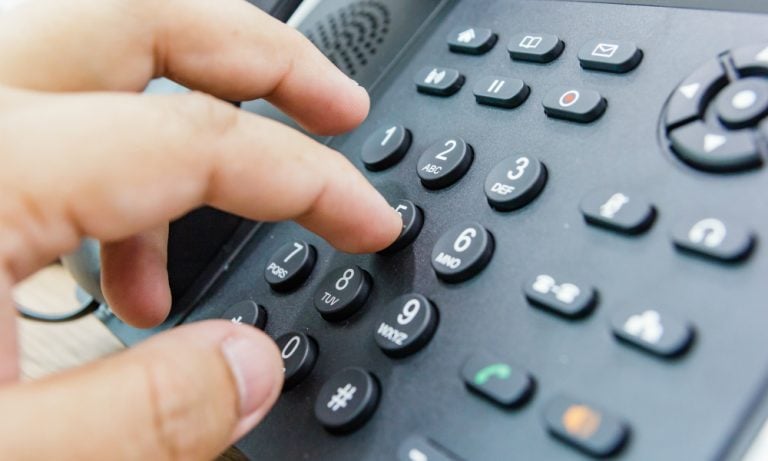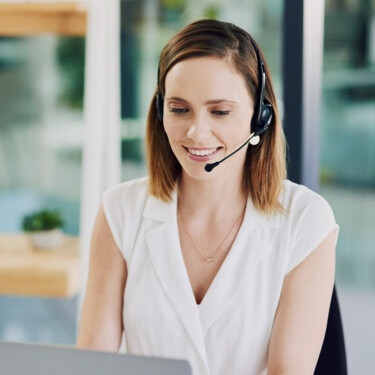All Categories
Featured
Table of Contents
- – Which Brand Of How To Call Forward To An Answer...
- – Who Is The Best 10 Sectors That Can Benefits F...
- – What Is The Best How To Answer The Phone Profe...
- – Who Is The Best Outsource Answering Services ...
- – What Is The Best What Is An Answering Service...
- – Which Is Best Phone Answering And Messaging ...
Which Brand Of How To Call Forward To An Answering Service Is The Best?
This gadget and its successors were developed by Sava Jacobson, an electrical engineer with a private consulting business. While early answering devices used magnetic tape innovation, the majority of modern devices uses strong state memory storage; some devices use a mix of both, with a solid-state circuit for the outbound message and a cassette for the incoming messages.
"toll conserving" listed below) (answer phone service). This is useful if the owner is screening calls and does not wish to speak with all callers. In any case after going, the calling celebration ought to be informed about the call having actually been answered (in many cases this begins the charging), either by some remark of the operator, or by some greeting message of the TAD, or dealt with to non-human callers (e.
This holds especially for the TADs with digitally kept welcoming messages or for earlier devices (prior to the rise of microcassettes) with a special limitless loop tape, separate from a second cassette, dedicated to recording. There have actually been answer-only devices without any recording abilities, where the greeting message needed to notify callers of a state of current unattainability, or e (virtual call answering service).
Who Is The Best 10 Sectors That Can Benefits From A Phone Answering Service Provider

about accessibility hours. In recording TADs the greeting generally consists of an invite to leave a message "after the beep". An answering device that uses a microcassette to record messages On a dual-cassette answerphone, there is an outgoing cassette, which after the defined number of rings plays a pre-recorded message to the caller.

Single-cassette answering makers consist of the outgoing message at the start of the tape and inbound messages on the remaining area. They initially play the announcement, then fast-forward to the next offered area for recording, then tape the caller's message. If there are many previous messages, fast-forwarding through them can trigger a substantial hold-up.
This beep is often described in the welcoming message, requesting that the caller leave a message "after the beep". Littles with digital storage for the taped messages do not reveal this hold-up, naturally. A TAD might provide a remote control facility, where the answerphone owner can call the home number and, by going into a code on the remote telephone's keypad, can listen to recorded messages, or erase them, even when far from home.
What Is The Best How To Answer The Phone Professionally (With Examples) In The World Right Now

Thereby the machine increases the variety of rings after which it responds to the call (normally by two, leading to 4 rings), if no unread messages are presently kept, however responses after the set number of rings (usually two) if there are unread messages. This permits the owner to learn whether there are messages waiting; if there are none, the owner can hang up the phone on the, e.
Some makers also allow themselves to be remotely triggered, if they have actually been changed off, by calling and letting the phone ring a particular big number of times (generally 10-15). Some provider abandon calls already after a smaller variety of rings, making remote activation difficult. In the early days of TADs an unique transmitter for DTMF tones (dual-tone multi-frequency signalling) was regionally required for remote control, because the formerly employed pulse dialling is not apt to communicate suitable signalling along an active connection, and the dual-tone multi-frequency signalling was executed step-by-step.
Any incoming call is not identifiable with regard to these homes in advance of going "off hook" by the terminal equipment. So after going off hook the calls should be changed to proper gadgets and only the voice-type is instantly accessible to a human, but maybe, nonetheless need to be routed to a LITTLE BIT (e.
Who Is The Best Outsource Answering Services In The Usa - Start From $11/hr Service?
What if I told you that you do not have to in fact get your gadget when addressing a client call? Someone else will. So practical, ideal? Addressing telephone call doesn't require somebody to be on the other end of the line. Effective automated phone systems can do the trick just as efficiently as a live representative and in some cases even better.
An automatic answering service or interactive voice response system is a phone system that interacts with callers without a live person on the line - call answering services. When companies utilize this innovation, consumers can get the response to a question about your business just by utilizing interactions set up on a pre-programmed call circulation.
Although live operators upgrade the client service experience, lots of calls do not require human interaction. A simple documented message or directions on how a customer can recover a piece of details normally fixes a caller's immediate requirement - virtual telephone answering. Automated answering services are a simple and reliable way to direct inbound calls to the ideal person.
What Is The Best What Is An Answering Service? The Ultimate Guide - Cms App?
Notification that when you call a company, either for support or product questions, the very first thing you will hear is a pre-recorded voice greeting and a series of choices like press 1 for client service, press 2 for questions, and so on. The pre-recorded alternatives branch off to other options depending on the customer's choice.
The phone tree system helps direct callers to the ideal person or department using the keypad on a cellphone. In some circumstances, callers can use their voices. It's worth noting that auto-attendant choices aren't restricted to the ten numbers on a phone's keypad. Once the caller has selected their first choice, you can create a multi-level auto-attendant that uses sub-menus to direct the caller to the best sort of assistance.
The caller does not need to communicate with a person if the auto-attendant phone system can handle their concern. The automatic service can path callers to a staff member if they reach a "dead end" and need help from a live representative. It is costly to work with an operator or executive assistant.
Which Is Best Phone Answering And Messaging Service Brand
Automated answering services, on the other hand, are substantially cheaper and provide significant cost savings at an average of $200-$420/month. Even if you don't have dedicated personnel to deal with call routing and management, an automated answering service enhances efficiency by enabling your group to concentrate on their strengths so they can more efficiently invest their time on the phone.
A sales lead routed to consumer service is a lost shot. If a consumer who has item concerns reaches the wrong department or receives incomplete responses from well-meaning employees who are less trained to handle a specific type of concern, it can be a cause of aggravation and dissatisfaction. An automatic answering system can reduce the number of misrouted calls, thus assisting your employees make much better use of their phone time while maximizing time in their calendar for other jobs.
With Automated Answering Systems, you can produce a tailored experience for both your staff and your callers. Make a recording of your main welcoming, and simply update it frequently to reflect what is going on in your organization. You can develop as lots of departments or menu options as you want.
Table of Contents
- – Which Brand Of How To Call Forward To An Answer...
- – Who Is The Best 10 Sectors That Can Benefits F...
- – What Is The Best How To Answer The Phone Profe...
- – Who Is The Best Outsource Answering Services ...
- – What Is The Best What Is An Answering Service...
- – Which Is Best Phone Answering And Messaging ...
Latest Posts
Virtual Phone Answering Near Me
Bilingual Answering Service Near Me ( Brisbane 4032)
Preferred Professional Answering Service Near Me – QLD
More
Latest Posts
Virtual Phone Answering Near Me
Bilingual Answering Service Near Me ( Brisbane 4032)
Preferred Professional Answering Service Near Me – QLD